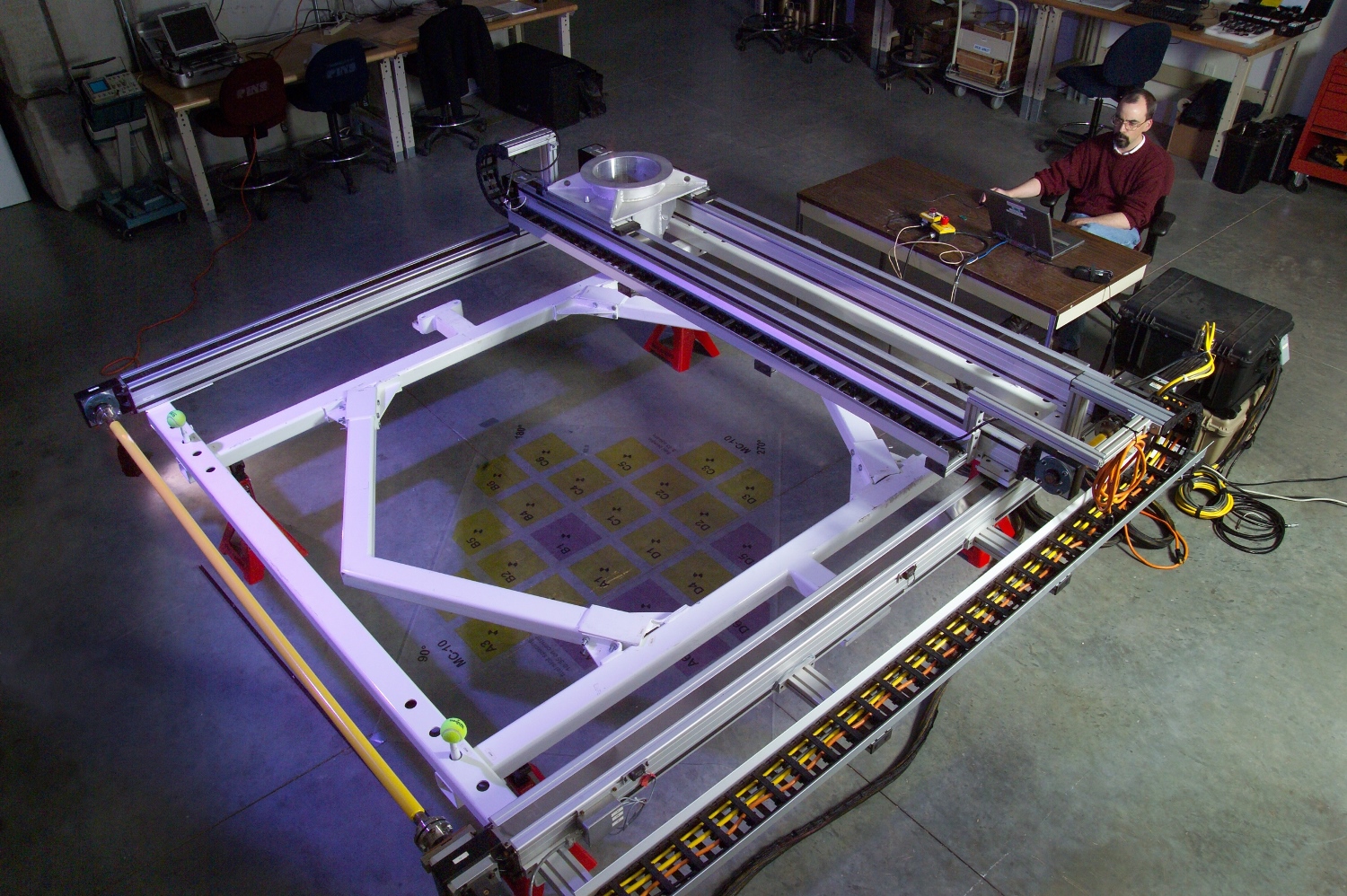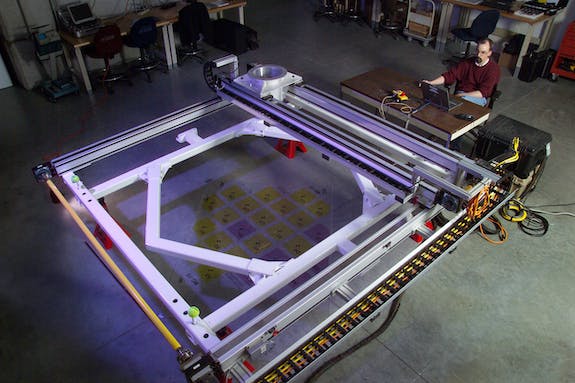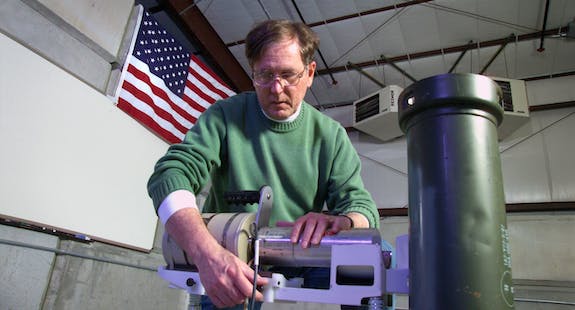INL’s explosives test range and Radiological Response Training Range enable unmatched testing and training opportunities that benefit the nation’s soldiers and first-responders. Building upon its core expertise in nuclear fuel and civilian nuclear technologies, INL has become an international resource for securing nuclear material.
Scrutinizing nuclear fuel casks
An INL invention helping the IAEA develop the capability to verify the contents of nuclear fuel dry casks is being demonstrated in Belgium. The Compton Dry-Cask Imaging Scanner, above, enables inspectors to discern the contents of a nuclear fuel storage cask without having to open it.
The device sits atop a closed cask, scans each of its storage slots, and uses gamma rays to reveal the presence or absence of fuel rods at each position. The device allows inspectors to independently verify storage records without having to open the casks. It also can help when records aren’t available or reliable.
Visualizing bullet impacts
INL enhanced its National Security Test Range by installing a flash X-ray system. This new capability allows stop-motion imaging of bullets penetrating targets and other dynamic events that can’t be imaged using conventional high-speed video techniques.
The flash X-ray system can see through smoke and fire to reveal how a projectile or weapon interacts with armor at the exact moment of impact. In the photo above, a copper shape charge, flying from left to right, impacts potential armor material.
The capability will improve researchers’ understanding of dynamic ballistic and explosives events, enabling better numerical modeling and improved armor designs.








